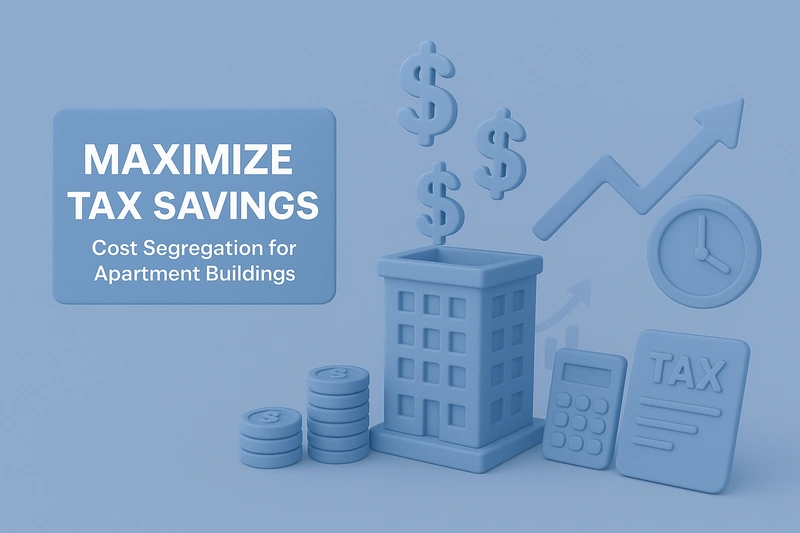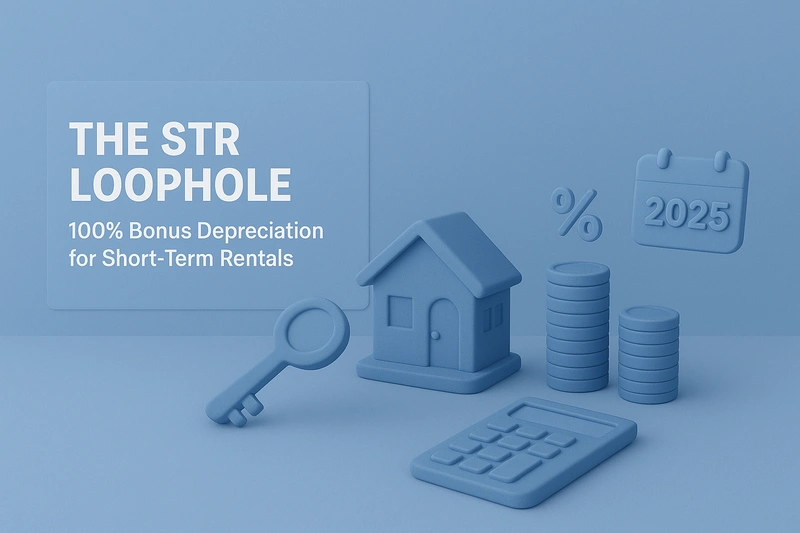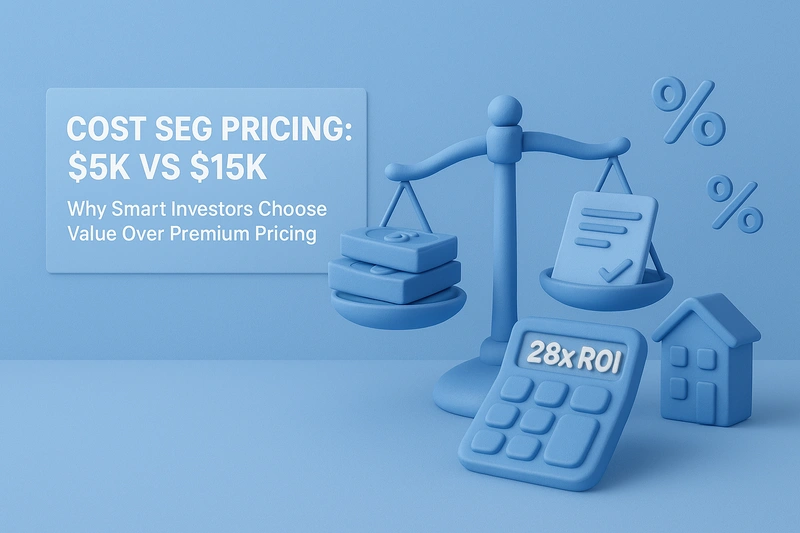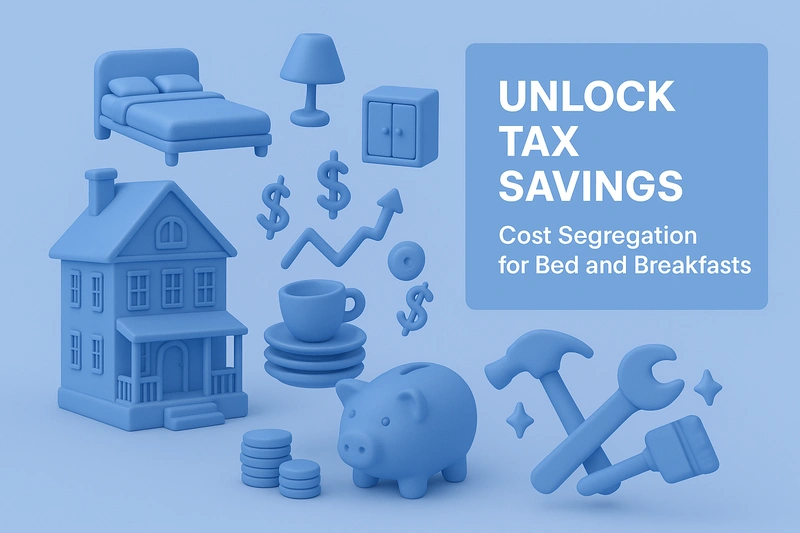A few years ago, I was advising an investor who had just closed on a mid-size apartment complex in the Southeast. He was excited about the rental income projections, but when we looked at the standard straight-line depreciation schedule, the tax benefits were underwhelming.
He was missing a golden opportunity. After running a cost segregation study, we uncovered more than $1.2 million in assets eligible for accelerated depreciation. That first year’s cash flow jumped significantly without changing a single rent price.
This is the kind of quiet but powerful financial optimization that savvy apartment investors are using to gain an edge in competitive markets. More than a tax tool, cost segregation is a way to realign capital faster and improve ROI.
The Core Concept of Cost Segregation for Apartment Buildings
Cost segregation is the process of identifying and reclassifying components of a property to shorter depreciation timelines than the standard 27.5 years for residential rental property. In apartment buildings, many elements (such as cabinetry, flooring, lighting, parking areas, and landscaping) can be depreciated over 5, 7, or 15 years instead.
By accelerating depreciation on these components, you can front-load tax deductions, reducing taxable income in the early years of ownership. For investors using leverage, these deductions can make a dramatic difference in available cash flow.
Why Apartment Buildings Are Ideal Candidates
Not all property types benefit equally from cost segregation, but apartment buildings consistently rank among the most advantageous for three reasons:
- High volume of qualifying assets: Residential complexes have a substantial amount of personal property and land improvements, from appliances to playground equipment.
- Multiple units mean multiples of savings: Repeating qualifying features across dozens or hundreds of units compounds the value of accelerated depreciation.
- Steady capital expenditures: Ongoing renovations, upgrades, and turnovers provide fresh opportunities to reclassify new improvements.
Timing Your Cost Segregation Study for Maximum Benefit
While you can complete a study in any tax year, timing it strategically can yield the best results:
- Immediately after acquisition: Captures the largest first-year deductions and optimizes initial cash flow.
- Post-renovation: Allows you to accelerate depreciation on newly installed components.
- Before a major tax year: If you anticipate unusually high taxable income, a cost segregation study can offset it.
IRS rules allow for “catch-up” depreciation through a change in accounting method, meaning you can still benefit even if you’ve owned the property for several years.
The Bonus Depreciation Advantage
Bonus depreciation has been one of the most powerful accelerators for apartment building investors in recent years. It allows you to immediately deduct a large percentage of the cost of qualifying assets (those with a depreciable life of 20 years or less) in the year they’re placed in service.
Here’s why it matters:
- Front-loading deductions: Instead of spreading depreciation evenly over 5, 7, or 15 years, bonus depreciation lets you capture a significant portion up front, often in the first year of ownership or after a renovation.
- Cash flow boost: The resulting tax savings can be reinvested into property improvements, used to reduce debt, or deployed toward additional acquisitions.
- Strategic timing: Because bonus depreciation applies to assets placed in service during the tax year, coordinating purchases and renovations can create an outsized deduction exactly when you need it.
For example, in an 80-unit apartment building acquisition, a cost segregation study might identify $2 million in assets eligible for 5-, 7-, and 15-year depreciation. If $1.5 million of that qualifies for bonus depreciation at the current phase-down rate, you could deduct that entire amount in year one, dramatically reducing taxable income and increasing available capital.
Thanks to a 2025 update to the tax code, 100% bonus depreciation is now permanent for most qualifying property acquired after January 19, 2025. That means investors can keep front-loading deductions for the foreseeable future.
Even for earlier acquisitions still under the old phase-down, the immediate deduction can create a meaningful head start on equity growth.
Pitfalls That Can Undermine Your Cost Segregation Results
Even though apartment buildings are prime candidates for cost segregation, not every investor captures the full range of benefits. In my experience, the missed opportunities are usually the result of avoidable oversights in planning or execution.
Some of the most common oversights include:
- Waiting too long to act: Delaying a study until several years after purchase can reduce immediate cash flow impact, and some owners fail to take advantage of the IRS “catch-up” provision that could unlock prior years’ deductions.
- Overlooking site improvements: Sidewalks, fencing, outdoor lighting, retaining walls, and other land improvements often qualify for shorter depreciation schedules but get left in the 27.5-year category.
- Relying on generic asset classification: Even highly competent CPAs may not have the engineering expertise to conduct a detailed physical asset breakdown. Without that, assets are often lumped into the building category unnecessarily.
Recognizing these pitfalls before you start ensures you get the most out of your study and keeps the entire process aligned with IRS standards. A strong combination of tax knowledge and engineering detail is key to maximizing results.
Partnering with the Right Experts Matters
Cost segregation is not a one-person job; it’s a multidisciplinary effort that blends engineering precision with tax law expertise. The IRS expects studies to be supported by detailed documentation that ties each asset classification to defensible, engineering-based findings.
A strong cost segregation team often includes:
- Cost segregation specialist: Leads the project, performs the engineering-based analysis, and prepares the report.
- Licensed engineer or construction professional: Evaluates physical property components, materials, and construction methods to ensure accurate classification.
- Tax attorney: Advises on compliance with IRS regulations and how cost segregation interacts with other tax strategies.
- CPA with real estate expertise: Integrates the study results into your tax filings and overall financial plan.
- Property manager or facilities director: Provides access to property records, blueprints, and on-site knowledge of building systems and improvements.
When these professionals collaborate, you get a study that maximizes tax savings and holds up under audit, ensuring that your deductions remain intact.
Unlocking the Hidden Value in Your Apartment Investment
If you’re holding apartment buildings and haven’t yet explored cost segregation, you’re likely leaving substantial tax savings untapped. The earlier you integrate it into your strategy, the sooner you can reallocate capital toward growth, whether that means property upgrades, acquisitions, or debt reduction.
To see how cost segregation for apartment buildings could directly impact your next tax year, it’s worth speaking to a specialist who understands both the engineering and compliance side. R.E. Cost Seg has the expertise to pinpoint qualifying assets and help you maximize your deductions while staying fully aligned with IRS requirements.






